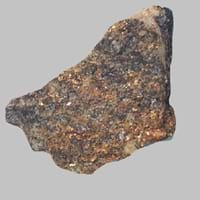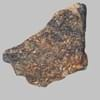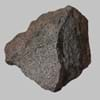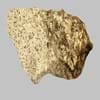Definition
Adakite is an intermediate to felsic volcanic rock that has geochemical characteristics of magma which is said to be formed by partial melting of altered basalt that is subducted below volcanic arcs
It is a metamorphic magnesium rich rock because it is composed of the mineral talc
Origin
Adak, Aleutian Islands
USA
Discoverer
Defant and Drummond
Unknown
Etymology
From Adak, Aleutian Islands
From 17th century, because of its greasy feel and use like a soap
Class
Igneous Rocks
Metamorphic Rocks
Sub-Class
Durable Rock, Medium Hardness Rock
Durable Rock, Soft Rock
Group
Volcanic
Not Applicable
Other Categories
Fine Grained Rock, Medium Grained Rock, Opaque Rock
Fine Grained Rock, Opaque Rock
Texture
Porphyritic
Polished
Color
Black, Brown, Light to Dark Grey
Black, Black to Grey, Green, Grey
Durability
Durable
Durable
Appearance
Dull and Soft
Dull, Banded and Foilated
Interior Uses
Decorative Aggregates, Floor Tiles, Homes, Hotels, Kitchens
Bathrooms, Decorative Aggregates, Homes, Interior Decoration
Exterior Uses
As Building Stone, As Facing Stone, Office Buildings
As Facing Stone, Garden Decoration
Other Architectural Uses
Whetstones
Curbing
Construction Industry
As Dimension Stone, Cobblestones, Rail Track Ballast, Roadstone
Manufacture of Magnesium and Dolomite Refractories
Medical Industry
Not Yet Used
Taken as a Supplement for Calcium or Magnesium
Antiquity Uses
Monuments, Sculpture, Small Figurines
Artifacts, Jewellery, Monuments, Sculpture
Commercial Uses
Commemorative Tablets, Pottery, Used in aquariums
Cemetery Markers, Creating Artwork, Gemstone, Jewelry, Manufacture of Soap, Solvents, Dyes, Plastics and Fibres, Production of Lime, Source of Magnesia (MgO)
Types
Not Available
Not Available
Features
Has High structural resistance against erosion and climate, Host rock for Diamond, Very fine grained rock
Host Rock for Lead
Archaeological Significance
Famous Monuments
Data Not Available
Christ the Redeemer in Rio de Janeiro, Stonehenge in English county of Wiltshire
Famous Sculptures
Data Not Available
Data Not Available
Formation
Adakite rocks are formed when the hydrous fluids are released from minerals that break down in metamorphosed basalt, and rise into the mantle they initiate partial melting.
Soapstone is a talc-schist, which is a type of metamorphic rock and it is largely composed of the mineral talc and is thus rich inmagnesium.
Mineral Content
Olivine, Plagioclase, Pyroxene
Albite, Apatite, Biotite, Calcite, Carbonate, Clay Minerals, Hornblende, Ilmenite, Micas, Plagioclase, Pyroxene, Quartz
Compound Content
Aluminium Oxide, MgO, Silicon Dioxide
CaO, Mg, MgO
Types of Metamorphism
Cataclastic Metamorphism, Contact Metamorphism, Impact Metamorphism, Regional Metamorphism
Burial Metamorphism, Cataclastic Metamorphism, Contact Metamorphism, Hydrothermal Metamorphism, Impact Metamorphism, Regional Metamorphism
Types of Weathering
Chemical Weathering, Mechanical Weathering
Not Applicable
Types of Erosion
Coastal Erosion, Sea Erosion, Water Erosion
Not Applicable
Grain Size
Fine to Medium Grained
Fine Grained
Fracture
Conchoidal
Conchoidal
Streak
Bluish Black
Black
Porosity
Less Porous
Less Porous
Luster
Grainy, Pearly and Vitreous
Greasy
Compressive Strength
Not Available
Cleavage
Not Available
Perfect
Toughness
Not Available
1
Specific Gravity
Not Available
2.86
Transparency
Opaque
Opaque
Density
Not Available
2.8-2.9 g/cm3
Specific Heat Capacity
Not Available
Resistance
Heat Resistant, Pressure Resistant, Wear Resistant
Heat Resistant, Pressure Resistant
Deposits in Eastern Continents
Asia
India, Russia
China, India, Indonesia, Japan, North Korea, Russia, Saudi Arabia, Singapore, South Korea, Sri Lanka, Tajikistan, Thailand
Africa
Ethiopia, Somalia, South Africa
Egypt, Ethiopia, Ghana, South Africa, Western Africa
Europe
Iceland
Austria, England, Finland, France, Germany, Greece, Spain, Sweden, Switzerland, United Kingdom
Others
Not Yet Found
Not Yet Found
Deposits in Western Continents
North America
Canada, USA
Canada, USA
South America
Brazil
Colombia
Deposits in Oceania Continent
Australia
Not Yet Found
Central Australia, New Zealand, Queensland
All about Adakite and Soapstone Properties
Know all about Adakite and Soapstone properties here. All properties of rocks are important as they define the type of rock and its application. Adakite belongs to Igneous Rocks while Soapstone belongs to Metamorphic Rocks.Texture of Adakite is Porphyritic whereas that of Soapstone is Polished. Adakite appears Dull and Soft and Soapstone appears Dull, Banded and Foilated. The luster of Adakite is grainy, pearly and vitreous while that of Soapstone is greasy. Adakite is available in black, brown, light to dark grey colors whereas Soapstone is available in black, black to grey, green, grey colors. The commercial uses of Adakite are commemorative tablets, pottery, used in aquariums and that of Soapstone are cemetery markers, creating artwork, gemstone, jewelry, manufacture of soap, solvents, dyes, plastics and fibres, production of lime, source of magnesia (mgo).










